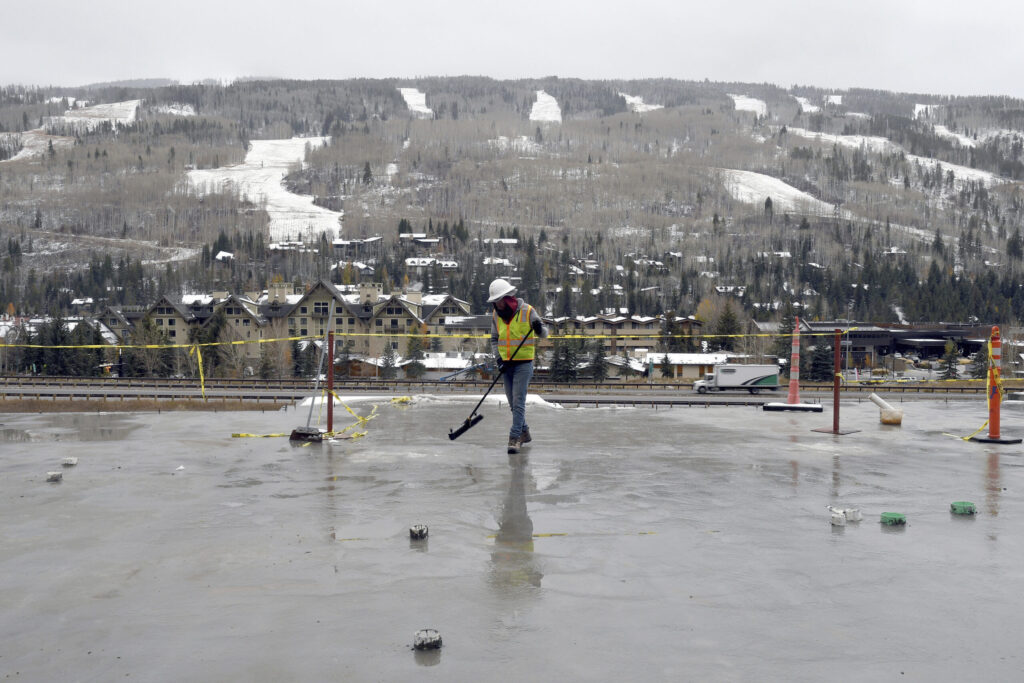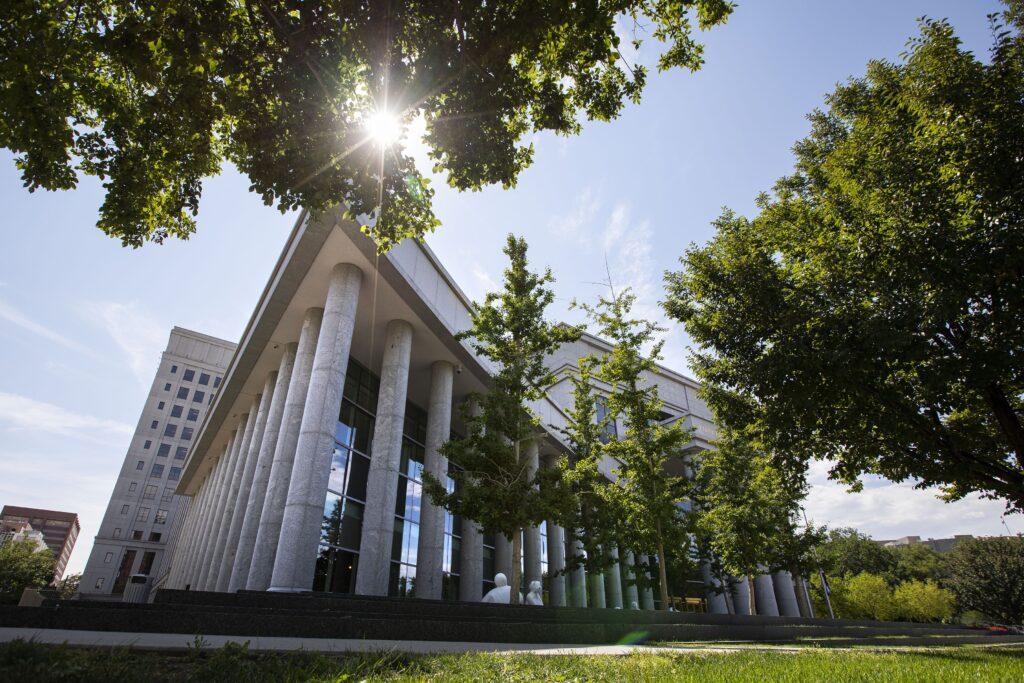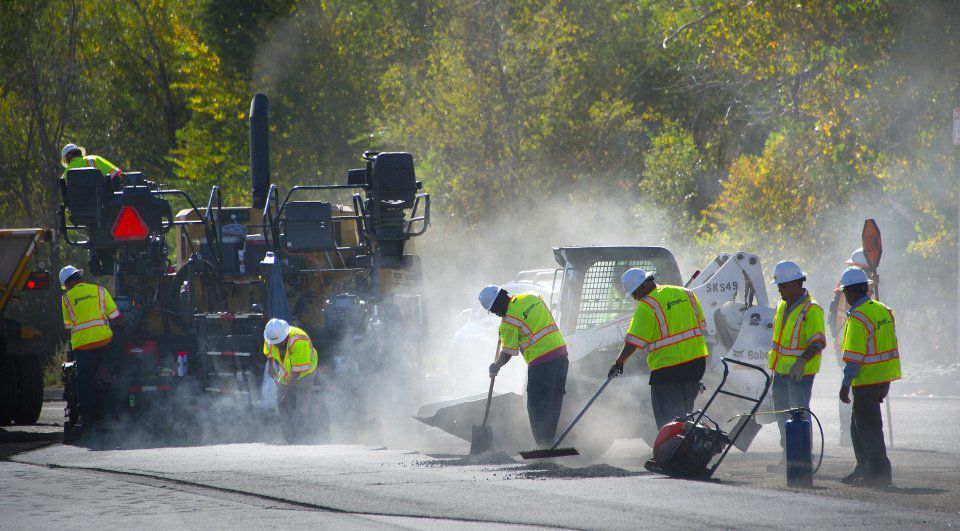Colorado faces budget deficit as lawmakers consider $2 billion more in spending
Colorado lawmakers this month began reviewing the state’s spending plan for the next fiscal year in the face of tight revenues and a budget deficit — even as policymakers are pushing for hundreds of millions of dollars in funding requests.
Only a tight sliver of those requests will likely get funded, if at all, once the dust settles.
All told, the draft budget for fiscal year 2024-25 expects to spend $40.6 billion — $2 billion more than last year, driven by bigger allocations for health care, a significant expansion in the state’s workforce and more money for schools seeing increased enrollment of immigrant students.
Lawmakers began tackling the spending proposal on Wednesday, with the House Appropriations Committee reviewing House Bill 1430 and its 46 accompanying measures, which are designed help to balance the budget.
Crafting a balanced budget is the only constitutional requirement lawmakers must accomplish each year.
A $170 million budget hole
The general fund portion of the budget is $16.3 billion, a 7% increase over the previous year.
General fund dollars come primarily from corporate and individual income taxes, as well as sales and use taxes. General fund money is considered discretionary — lawmakers rely on it for new programs, to continue funding existing programs, or for the state’s general fund reserve, set at 15%.
On March 15, new revenue forecasts showed the Joint Budget Committee — the panel tasked with crafting the budget — that lawmakers have a hole to plug, with estimates ranging from $160 million to $225 million, depending on which forecast was used.
The problem — JBC Vice Chair Sen. Rachel Zenzinger, D-Arvada, said — was something the committee had not had to contend with before: A difference between what the U.S. Census said Colorado’s population was versus what the state demographer estimated.
For purposes of crafting the state budget, the Joint Budget Committee has, in the past, used the state demographer’s information, in part because that information was available sooner.
But, technically, the JBC is required to use the federal census data.
It never made much of a difference before, as the numbers were usually pretty close, Zenzinger said.
Not this year, however.
The U.S. Census estimated Colorado’s population lower than the state demographer’s numbers.
That matters because the census is part of what the Taxpayer’s Bill of Rights revenue cap is based on, and with a lower population estimate, that meant a reduction in the TABOR revenue cap of about $70 million or so.
The cap limits just how much general fund lawmakers have available, and reducing it by $70 million offered a larger set of complications.
The news that revenues would make for a tight budget year wasn’t unexpected.
And even with the hole, the JBC went with the more optimistic forecast from the governor’s economists. Even so, that put the anticipated shortfall — unless budget writers decided to tap into the state reserve, which they didn’t want to do — at around $170 million.
“I’ve never had to find those kinds of funds before,” said Rep. Rick Taggart, R-Grand Junction.
It was the assurances from his JBC colleagues that they would find a way to fill the hole that made the situation less frightening, Taggart said.
The committee spent its longest hours of the week on March 21, ultimately coming up with a variety of cash funds and one-time transfers to cover that budget hole.
One-time transfers and the ARPA swap
As budget writers tinkered and made modifications, the term “one-time only” began to show up a lot in the decisions.
Indeed, the committee made at least 20 decisions on budget cuts and transfers of cash funds into the state budget.
One of those decisions was making what’s known as the American Rescue Plan Act (ARPA) swap.
In the wake of COVID-19, the federal government made $195 billion available to state governments to help them deal with the effects of the pandemic. That was intended to help with economic recovery caused by the emergency, support public health, replace lost public sector revenue, invest in water, sewer and broadband infrastructure and ensure premium pay for essential workers.
Colorado’s share was $3.8 billion.
Under the rules, those dollars must be obligated by Dec. 31, 2024 and spent by Dec. 31, 2026.
But the federal government put out an interim rule last November, saying whatever hadn’t been obligated could be spent in other areas.
The governor’s office proposed a “swap” back in January: use some of those ARPA dollars — up to $1.5 billion — for personal services lines in the budget for 2023-24 and the first half of the 2024-25 budget year, instead of using general fund dollars.
That largely would apply to the agencies that had programs funded with ARPA dollars, according to Sen. Barbara Kirkmeyer, R-Weld County.
That would allow the state to use up those dollars by the Dec. 31, 2024 deadline. About $700 million still sits in agencies that they expect to spend by Dec. 31, 2024, she said. That swap also gave the agencies “roll forward” flexibility that allows those dollars to be spent by the final deadline in 2026.
Taggart, the Grand Junction Republican, told reporters last week that several states have taken a similar approach — they took all the ARPA dollars that weren’t obligated and swapped them back into a personal services line in each department that received those dollars.
The swap also freed up $197 million the JBC could then use to balance the budget.
One-time money, severance taxes and college tuition
The use of severance taxes to balance the budget is an old JBC trick that goes back at least 20 years, often to the dismay of rural lawmakers, the communities that rely on those dollars to mitigate the impact of oil and gas activity and the dozen state programs that also depend on those dollars, including in parks and wildlife, water and other natural resources areas.
Kirkmeyer said the JBC swept $69 million in severance taxes to cover ongoing capital development projects that are already underway. About $44 million came from the severance tax operational account, she said.
The other $25 million came from the Department of Local Affairs energy and rural impact grants, also funded with severance tax money.
Coming up with additional money for capital construction was particularly important for Taggart, as the final year of an ongoing construction project for Colorado Mesa University fell just below the cutoff line, along with three other projects.
The last major item on the panel’s list of decisions on funding state agencies was just how much lawmakers could put into public higher education.
That decision was put off until after the March revenue forecast, according to JBC documents.
It was a mistake, according to Kirkmeyer, to leave higher education until the very end of their decision process.
The decisions on higher education included the Colorado General Assembly’s assumptions on tuition increases, how much general fund dollars could go into their budgets, and the amount of financial aid that would be available.
The JBC’s decision on tuition was for a 3% cap on tuition for resident students and 4% for non-resident students. The recommendation from the General Assembly is not a mandate to the colleges and universities, although they have largely followed them for decades.
The educational institutions sought a 5.2% tuition increase, which is just shy of the increase approved for 2023-24. But a JBC staff analysis said Colorado resident students already struggle with high tuition rates compared to the rest of the nation.
It’s in the general fund where the institutions took the hit. The governor’s office requested $48 million for both general fund increases and financial aid, while the institutions asked for $148 million.
The JBC decided on $56.3 million.
Healthy Meals for All school lunch program
The news that Proposition FF funding didn’t cover the actual costs of providing free lunches to Colorado school students came just as the JBC was grappling with how to cover everything else.
The budget panel ultimately decided to cover the $56 million shortfall for 2024-25 with the state education fund — which meant they would take money away from public education.
That didn’t sit well with Kirkmeyer.
“That was not supposed to happen,” she said. “It’s not my fault the people who pushed that referendum through didn’t tell people the truth or didn’t figure it right. They overspent and we told them, ‘We’re not doing that again.'”
“And they need to figure out how to stay within the funding they get,” Kirkmeyer said.
The balancing acts
The March 15 forecast meant the JBC members had to go back and revisit a lot of their previous decisions, which led to the 20 cuts they made this month.
That, in turn, meant a lot of scaling back or not doing some things at all.
They also looked for ways to boost revenue, such as with the severance tax, and a way of reclassifying gaming and cigarette tax money that would free up room under the TABOR cap. That also included looking for a different fund source to cover gaps, such as using the state education fund for the Healthy Meals shortfall.
There were also placeholders for bills that required a reserve, which meant reductions somewhere else, Zenzinger said.
Then there were these cuts and reductions.
-
The Medicaid provider rate, originally approved at 2.5%, was decreased to 2%. That saved about $19 million, but not without angst among the committee, which has struggled to find a way to raise provider rates as a way of ensuring providers don’t drop out of state programs.
-
The JBC early on decided to expand the CHIP+ (the state’s low-income health insurance program for kids) population to allow children to have access to autistic therapies, an addition to the CHIP+ program. “We thought it was a great idea,” Zenzinger said. But they had to reverse that expansion decision.
-
Local public health agencies asked for $12 million; the Department of Public Health & Environment requested $7 million. The $12 million was not extra funding, Zenzinger said. It’s the current level the agencies are operating under, although that goes back to the COVID-19 pandemic. CDPHE, on the other hand, got nothing in the JBC’s original decision. That was reduced to $10 million for the agencies, although the state health department got $7 million.
-
On dental provider rates, the JBC adopted a targeted adjustment based on an analysis. But then the last week happened — and that got cut. Members promised to revisit the matter next year.
-
The JBC went back and forth on a Department of Public Safety grant program, a $10 million request from the department. The lawmakers ultimately settled at $3 million.
-
Federally-qualified health centers were not recommended for any additional funding from the governor’s office. The JBC decided to fund it with $7 million, but then scaled it back by $500,000.
-
A Kirkmeyer-Zenzinger bill that directs the Department of Local Affairs to come up with a methodology for doing statewide, regional and local housing needs assessments will get its $15 million from the department’s energy and rural impact grant program, instead of general fund money.
“Everyone’s turning over every single stone we can,” Taggart said. “Unfortunately, we won’t be able to fund everything. This is not a year when you can depend on your priorities getting fully funded.”
Budget highlights
The budget increase means more state employees, estimated at 1,220 FTE (full-time equivalent) over 2023-24 levels. This brings the number of state positions to 66,189, a 2% increase from last year.
At the same time, however, several state agencies are facing critical workforce shortages. One solution lawmakers are exploring is better pay by bringing classified workforce salaries up to market rates, noting that the most recent study on state worker compensation shows Colorado’s base salaries are 7.9% lower than the market median.
Among the agencies with the most acute shortages are corrections and human services.
The Department of Corrections received a $16 million supplemental appropriation, approved in February, that included incentives for clinical workers — nurses, social workers and physicians’ assistants — and other corrections employees, as well as housing stipends.
The 2024-25 appropriation includes $8.3 million, almost all in general fund, to provide a 3.2% non-base building salary increase tied to the state’s union contract with Colorado WINS. That’s on top of the 3% increase all state workers are slated to receive.
Another $6.2 million are earmarked incentives for the clinical staff of up to $25,000 per person. Nearly $2 million, plus 6.2 more FTE positions, would target staff retention, including through the corrections department’s talent acquisition department.
Housing stipends would be available to corrections staff living in the Buena Vista area, and $360,000 in general funds would be allocated.
The caseload for the Department of Corrections is expected to drop slightly, with an increase of 116 male prison beds, 50 female state beds, and a decrease of 142 county jail beds. That will reduce the appropriations for caseload by $440,000 from mostly the general fund. The department, however, requested additional funding for 253 male private prison beds and 80 female prison beds.
The state’s Joint Budget Committee has struggled with caseload estimates in recent years, questioning the data supplied by the department.
The total caseload is estimated at 17,292 as of January — 13,165 in state prisons, with the rest in private prisons, community corrections facilities and jails.
Despite the slight reduction in caseload, the department’s FTE is estimated to increase by 50.
But there’s a looming problem for corrections. By 2026-27, just two years from now, the state-run prisons are forecasted to run out of bed for male inmates and there’s an indication that could happen sooner. That’s about 500 more beds.
The JBC analysis pointed out the state has eliminated 1,000 beds in the past several years, tied to prison closures and policy decisions by the General Assembly.
The corrections budget also includes more funding for job training, according to JBC Chair Rep. Shannon Bird, D-Westminster.
Those training skills are for jobs in areas such as renewable energy, HVAC, electrical systems, installing electric vehicle charging stations and even obtaining a commercial driver’s license.
Among the biggest requests for the Department of Human Services is addressing the backlog of mental competency beds. The budget adds $68 million for 145 more private hospital beds and more beds at the two state hospitals in Pueblo and Fort Logan.
That means more staffers for a department that already has a workforce shortage.
The budget includes $1.7 million in one-time compensation for staff who work in 24/7 facilities, such as the two-state hospitals, the three regional centers, and several other veteran community living centers.
The department also has a $25,000 bonus and incentive payment program for hiring and retaining medical staff, including nurses, psychologists and social workers.
The department’s full-time equivalent (FTE) is estimated to increase by 89 for the 2024-25 budget year.
Education/higher education
Joint Budget Committee members and fellow lawmakers have looked forward to the day the state could pay off its 14-year “debt” to K-12 education, known as the budget stabilization factor
The 2024-25 budget pays off the last of the obligation, at around $140 million.
The obligation began in 2010 at more than $1 billion. Lawmakers whittled it down to about half of that by 2020, and then COVID-19 hit. The General Assembly bumped it to its highest level ever — to $1.4 billion. Lawmakers were able to reverse that increase the following year and have been continually paying it down.
Adjusted for inflation, however, the budget for K-12 is little more than what the state funded in 1989, some 35 years ago.
The School Finance Project, funded by education groups such as the Colorado Education Association, the Rural School Alliance and the state organizations for superintendents and school boards, insisted that public schools have lost $10 billion between 2009 and 2023 under the budget stabilization factor.
House Democrats on the Joint Budget Committee pointed to education funding as the most substantial factor for the 2024-25 budget in a Wednesday briefing.
House Speaker Julie McCluskie, D-Dillon, said the headline for the upcoming year’s budget is the state’s investment in education, including childhood programs, the payoff of the budget stabilization factor and the investment in higher education.
Rep. Shannon Bird, who chairs the Joint Budget Committee, said, “This is the first year since 2010 that we will be fully constitutionally compliant with how we fund our K-12 public schools.”
Bird said it’s also the first time the state has fully funded special education. The K-12 budget includes 10% more funding for English language learners. The state invested $17 million more in special education programs this year.
The budget also covers the recent influx of immigrants into the public education system, with $24 million coming from the state education fund to cover the increased enrollment.
Denver Public Schools, for example, reported back in February that it has been seeing a steady pace of new enrollment of roughly 200 to 250 students each week. That enrollment increase corresponded with the surges of immigrants arriving in Denver after illegally crossing America’s southern border.
Funding for higher education will get a 10% boost, said Bird, D-Westminster. That increase will allow colleges and universities to cover costs and hold in-state tuition increases to 3%. That’s important, Bird added, because the committee has had concerns about the ability of students from middle-income families to afford college.
Increasing the state’s contribution is one of the most meaningful things the legislature can do to hold down those costs, she said.
The higher education budget also includes a $2.4 million appropriation to the state’s three smallest rural universities: Fort Lewis College, Western State Colorado University and Adams State University.
Bird said those institutions play a central role in their communities, and if students didn’t have them, they probably wouldn’t go to college.
Budget committee member Rep. Emily Sirota, D-Denver, highlighted more funding for programs supporting childcare providers and expanding a visitor pilot program that allows hospitals in 10 counties to do home visits with new mothers.
The state’s lingering problems with a waitlist for those with intellectual disabilities will decrease by 129 with funding for residential adult services, Sirota noted. The budget also puts dollars into funding high acuity crisis beds for minors, costing just under $26 million.
The budget also invests in programs for those with behavioral and drug abuse issues in what’s known as institutions for mental disease (IMD). The current guidelines allow for a 15-day stay, but the budget allows for expansion up to 30 days, with approval for a waiver from the federal government since Medicaid pays for the services.
Sirota said there’s sometimes a disincentive to release people after 15 days because of the funding.
And then House lawmakers added …
House members on both sides of the aisle were not shy in putting their own stamps on the budget during Thursday’s second reading debate.
And by 5 p.m., that meant adopting more than a dozen amendments, which moved the budget out of balance by at least $11 million in general fund dollars.
The largest change was a $6.1 million general fund commitment to senior services in the Department of Human Services.
Lawmakers also added $1.55 million into the Tony Grampsas Youth Services Program; $1 million into the Department of Labor and Employment for veterans services; and, $2 million for school resource officers in the Department of Public Safety.
There are no identified sources for those amendments, all which tapped general fund dollars.
One successful amendment took issue with prison caseload estimates. There are two this year, and the JBC went with the higher forecast and funded additional beds for the Department of Corrections.
Reps. Lorena Garcia, D-Adams County, and Matt Soper, R-Delta, advocated for using a lower estimate, and moving funding — about $3.12 million — to a variety of departments, mostly related to substance abuse and child care.
There’s more to that amendment than just the swap, and it’s tied to parole.
The department’s current vacant bed rate is at 4.2%, Garcia told Colorado Politics.
When it drops to 3%, it triggers a 2018 law that requires the department to ramp up parole efforts. The funding targeted in the amendment would reduce general fund dollars to the department for additional beds. But even with the department losing those additional beds, Garcia said, it won’t trigger the 3% parole provision.
Several amendments, none successful, attempted to put more money into paying ranchers for livestock lost to Colorado’s new wolf population.
The amendment that could have had the biggest effect came from Rep. Ron Weinberg, R-Loveland, who sought $100 million for wildfire mitigation. That had followed a previous attempt at $100,000. He introduced the amendment with the larger cost with “hold my beer.”
Once the House finished Thursday’s debate, the budget bill and its accompanying measures will head to a final vote on April 1. The JBC will then strip off the amendments and send a “clean,” un-amended bill to the Senate, which will begin the process anew.













